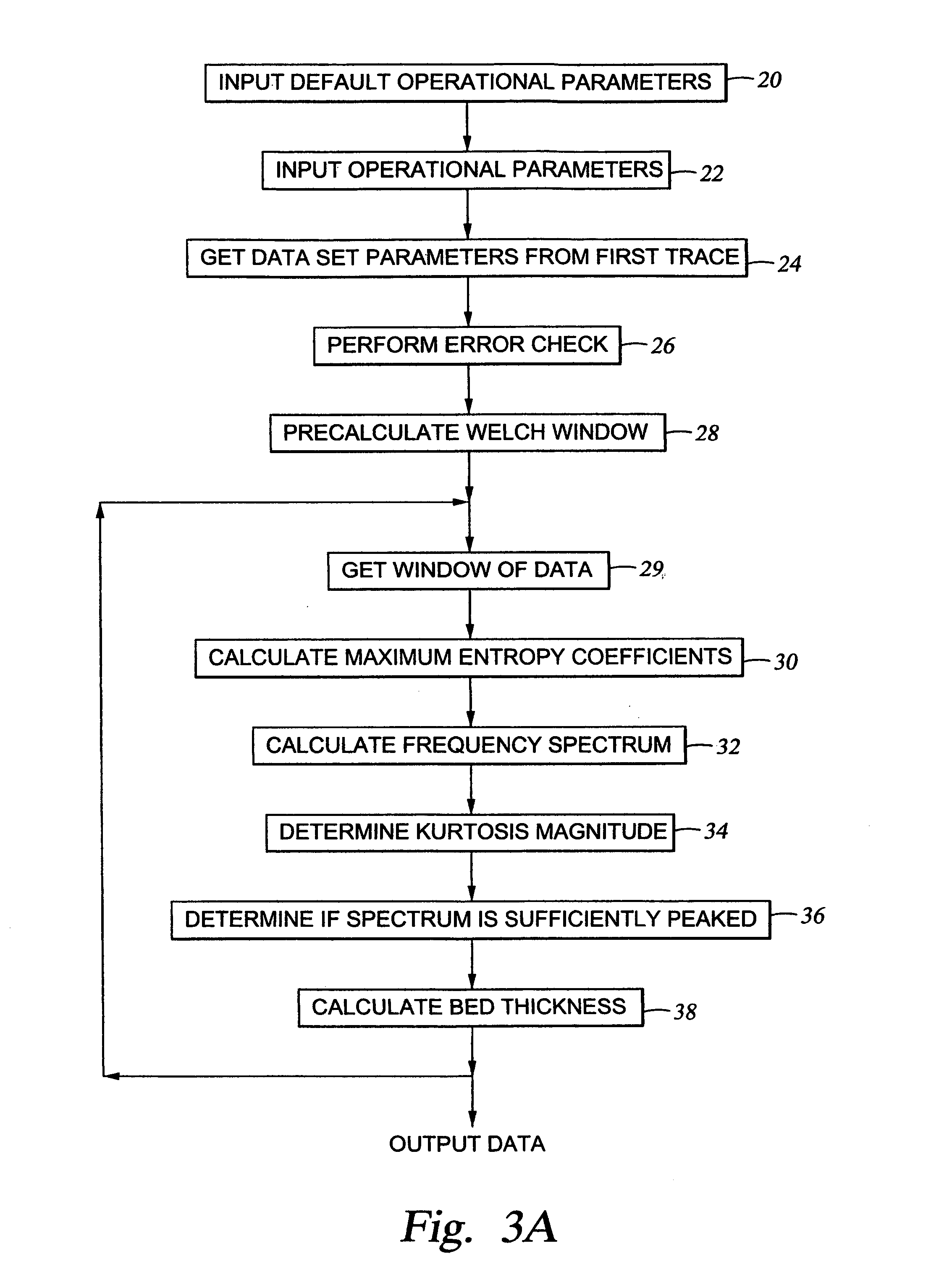System for estimating thickness of thin subsurface strata
a thin subsurface strata and thickness technology, applied in the field of seismic data processing, can solve the problems of blurring the image of the subsurface, insufficient seismic data resolution, and inability to accurately depict thin subsurface strata with clarity,
- Summary
- Abstract
- Description
- Claims
- Application Information
AI Technical Summary
Problems solved by technology
Method used
Image
Examples
Embodiment Construction
[0032]The invention comprises a system for processing seismic data to detect the presence of thin beds. The data may be either two-dimensional (2-D) data gathered at a succession of data points along a line on the earth's surface, or the data may be three-dimensional (3-D) data gathered from seismic data points distributed, typically in a grid pattern, within an area of the earth's surface. A seismic signal that is transmitted into the earth for purposes of conducting a seismic survey will typically include substantial energy within a frequency range extending from as low as 5 Hz. up to at least 60 Hz. When this energy reaches a thin bed in the earth's subsurface, a portion of the incident energy will be reflected from the upper interface of the thin bed and from the lower interface of the bed. If the bed were thicker, the reflection from the upper interface and from the lower interface would appear separately in the resulting seismic data and it would be possible to determine the b...
PUM
 Login to View More
Login to View More Abstract
Description
Claims
Application Information
 Login to View More
Login to View More - R&D
- Intellectual Property
- Life Sciences
- Materials
- Tech Scout
- Unparalleled Data Quality
- Higher Quality Content
- 60% Fewer Hallucinations
Browse by: Latest US Patents, China's latest patents, Technical Efficacy Thesaurus, Application Domain, Technology Topic, Popular Technical Reports.
© 2025 PatSnap. All rights reserved.Legal|Privacy policy|Modern Slavery Act Transparency Statement|Sitemap|About US| Contact US: help@patsnap.com



